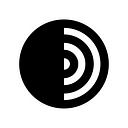Design, meet Open
Design, your days of elitist exclusivity are numbered.
This time last year, I was speaking at OSCON, helping Capital One launch its first open source software into the world. When a regulated bank begins to embrace the value of open source software, it’s clear that the movement has come to a point of respect and recognition. As OSCON 2016 opens today, I wanted to share a few thoughts on a place where the power of being open has not deeply penetrated yet: the profession of Design. But first, a quick activity to set the stage:
Open up Google, and do an image search for “famous designers”. You will get a general feeling for the stereotypical designer — a lot of black and white, eyes-to-the-camera, elite and fairly narcissistic portraits. And lest you think I’m judging, check out my Instagram feed and you’ll see an unhealthy number of selfies with a twinge of duckface.
Now, do an image search for “nobel peace prize winners” and you get a very different feeling. A lot more color (photographic and otherwise!), people who are not looking directly at the camera, but are engaged in talking and working with people to make the world a better place. And a whole lot more smiles :). As a designer, my ultimate goal is to use my craft to make the world a better and more connected place. And I believe this can only happen if we, as a profession, fully embrace the power of being “open”. Doing this requires that we recognize and act on two essential truths:
1. Humans are creative
Designers love to perpetuate the myth of the lone genius: that only a few of us are gifted with the talent of being creative. It makes us feel special and wanted. But the truth is that everyone is creative. If you need convincing, watch the first few minutes of Tim Brown’s TED talk on Creativity and Play, where the entire audience goes through Stanford University professor Bob McKim’s drawing experiment.
We also love the myth that “people don’t know what they want”. Again, it puts us into a mystical black box of control. But the truth is that people can absolutely envision a better future and express their hopes and their dreams — they just need the right tools (jump to minute 5:00) and a little encouragement.
2. Openness supercharges Design
Designers are traditionally trained to work through the design process in a studio, and unveil their masterpiece only when it’s ready. For any designer who has worked in tech, you know how dysfunctional this approach is. Sure, a young design team can naturally feel crushed by the sobering and conflicting opinions from across the organization. A great design leader will help the team mature to not only be able to “take” external critique, but to actually seek out conflicting perspectives in the passionate pursuit of excellence.
Far from creating a situation where Design becomes diluted or created by “committee”, all of this extra input supercharges the design process and gives designers a lot more sources of inspiration. And the most important input you can get is from the people who you are designing for. Here’s a story about how this worked for Google’s Project Ara, brought to you by kari.
What’s next?
I’m excited to see where the efforts of an entire generation of designers will take the field based on these two truths. I’m encouraged by the efforts of Garth to create a space for this conversation in the open source community, the way that Etsy is empowering artists across the world, how Threadless uses the power of the crowd to create its designer line of clothing, how the incredible Jessica and Jesse at Nervous System provide tools for anyone to create gorgeous jewelry, all of the chaos and creativity seen in the maker movement, and many experiments in-between. Do you have an awesome example of this emerging space of Open Design? I’d love to check it out!
Originally published at www.garagepartners.com.

